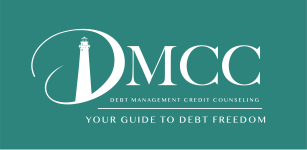FEATURE ARTICLE: New Rules about Credit Decisions and Notices
Starting in 2011, many credit-seeking consumers will get more information about how their credit report or credit score can impact a lender’s decision to grant credit and the terms under which credit is offered. Beginning January 1, new rules from the Federal Reserve and the Federal Trade Commission require lenders to provide new information to consumers under certain conditions.
What type of notice will I receive? Why?
Depending on the circumstances, when you apply for credit, you may receive a notice with information about your credit report or credit score. The new rules introduce several types of notices:
- Credit Score Notice. In some cases, you will get a notice that states your credit score and information about how it compares to other consumers’ scores. A lender would provide this “credit score notice” to all credit applicants, whether you apply for a mortgage, auto loan or another type of credit.
- Risk-Based Pricing Notice. Not all lenders provide a credit score notice to all applicants. Instead, you may receive a “risk-based pricing notice”. You would only receive this if you are offered credit on terms that are less favorable than the terms offered to other consumers because of information in your credit report. For example, you may receive this type of notice if you have negative information in your credit report and you are offered a loan with an annual percentage rate (APR) that is higher than the APR offered to other consumers who apply for that loan.
- Account Review Notice. If your APR on an existing credit account is increased based on a review of your credit report, you may receive an “account review notice”. For example, some credit card issuers conduct periodic reviews of customers’ credit reports. If there has been a change in your report since you initially applied for the card, the issuer may increase your APR. Under these circumstances, you would receive this notice providing you with the credit report information that resulted in the APR increase.
What do the notices do for me?
These new notices give you the opportunity to check the accuracy of the information in your credit report. The notices identify the credit bureau that provided your credit report or credit score to your lender, allowing you to dispute any information that you believe is incorrect. All of the notices provide information on how to obtain a free credit report. In addition:
- A “credit score notice” will include your credit score. You can check the accuracy of your credit report by obtaining a free annual credit report, which is available to all consumers regardless of whether they have received a notice.
- A “risk-based pricing notice” or an “account review notice” will not include your credit score, but will include information about how to obtain a free credit report from the credit bureau identified in the notice within 60 days of receiving that notice. This report will be in addition to the free annual credit report available to all consumers.
What should I do if I receive a notice?
1. Review the notice. If you receive any of these notices, read it carefully to make sure you understand how your credit report or credit score may affect the price you pay for credit. Ask the lender to explain anything in the notice that you do not understand.
2. Obtain and examine your credit report. If you get a “risk-based pricing notice” or an “account review notice”, get your free credit report by following the instructions on your notice and review the information in it right away. If you get a “credit score notice”, and you are surprised by how your credit score compares to the scores of other consumers, you may want to get your free annual credit report from the credit bureau identified in the notice and review it for accuracy.
3. Dispute any errors. If you find errors in your credit report, you may dispute the information and request that the information be deleted or corrected.
MONEY SAVING TIP: Lower your hot water thermostat 10 degrees, but no lower than 120 degrees. You’ll still get all the hot water you need and save 25 kilowatt hours a month.
DID YOU KNOW…that you can check to see the star rating of your bank, credit union or thrift? Check out this link and follow the directions to make sure your institution is safe enough for your money https://www.bankrate.com/insurance/car/cheap-car-insurance-companies/.
